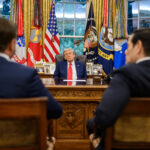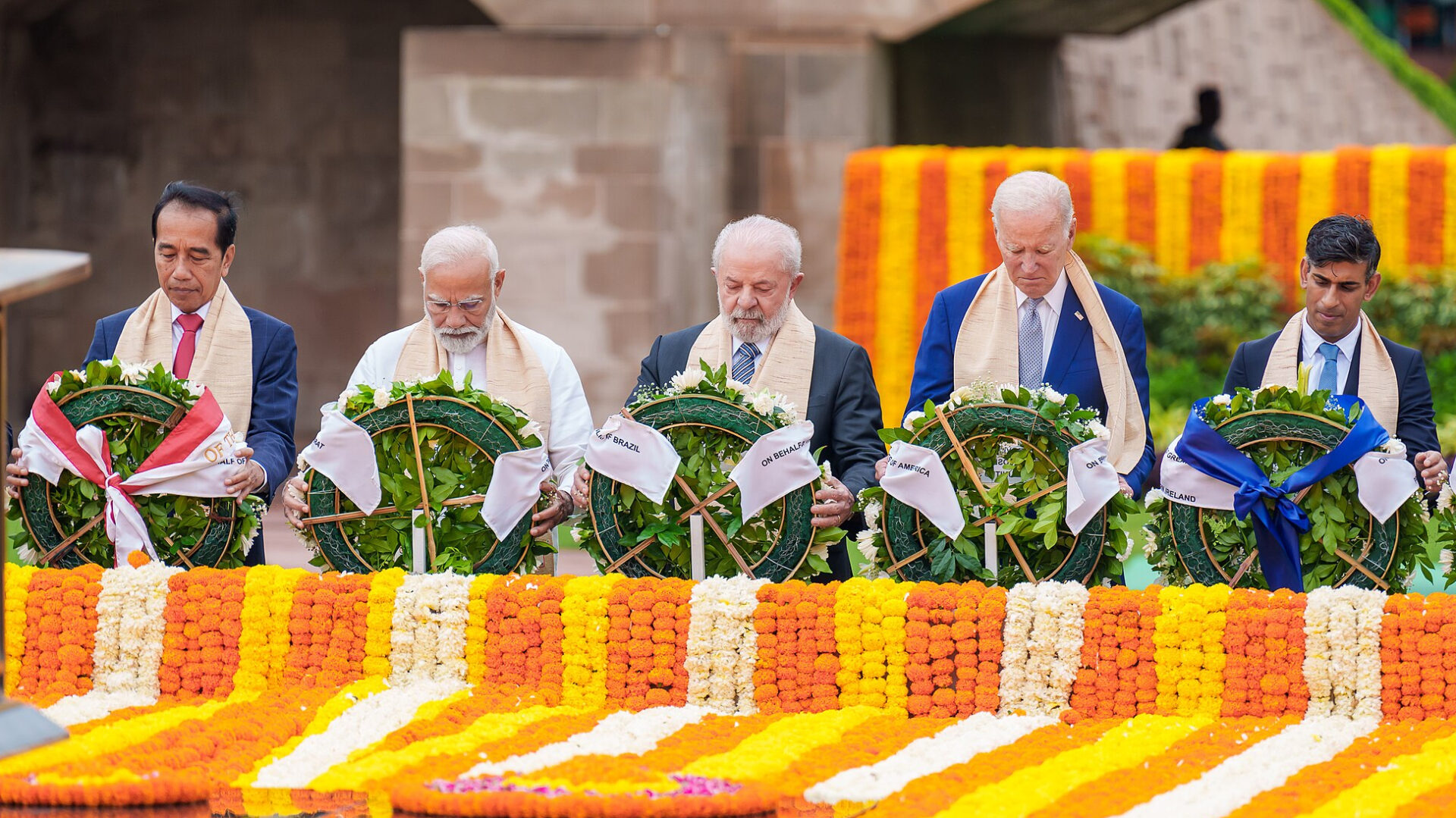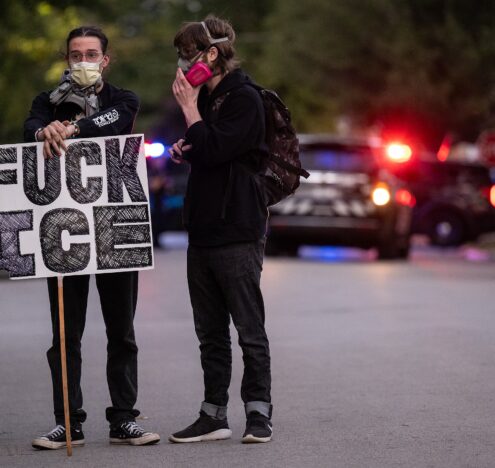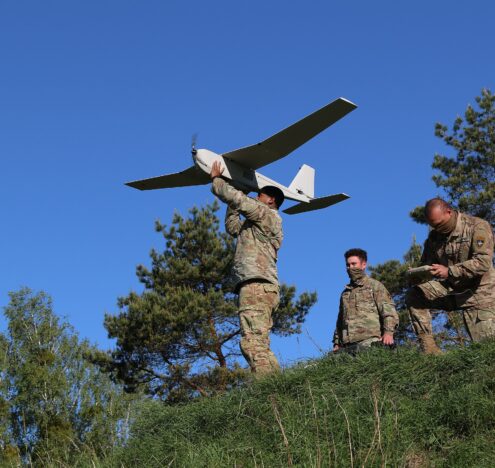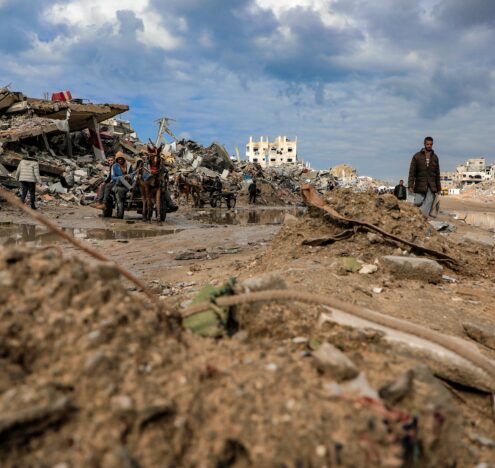“Adults in a Room” is a series in collaboration with The Stimson Center’s Reimagining US Grand Strategy program. The series stems from the group’s monthly networking events that call on analysts to gather virtually and hash out a salient topic. It aims to give you a peek into their Zoom room and a deep understanding of the issue at hand in less than the time it takes to sip your morning coffee without the jargon, acronyms, and stuffiness that often come with expertise.
Summits between world leaders have long acted as the poster child for diplomacy, though many still debate whether these meetings are critical forums for negotiations or glorified photo-ops. This debate remains relevant as ever, as numerous high-profile summits have captured the media in recent years, particularly those with Indo-Pacific leaders. Summit diplomacy is undeniably on the rise in the region, and with meetings frequently occurring on the bi-, tri-, mini-, and multilateral levels, many are questioning their potential impact on the ever-evolving architecture of Indo-Pacific security.
The Reimagining US Grand Strategy program’s June 2024 roundtable brought experts together to discuss this rising trend and its implications for Indo-Pacific security. The group noted how numerous summits have accompanied the deepening of US alliances in the Indo-Pacific, such as with Japan, South Korea, Australia, and the Philippines, and the expansion of initiatives like the Quad and AUKUS.
While these meetings have led to significant developments in these relationships, the group was split on the influence of individual leaders on this progress and whether that compromises the long-term integrity of these deepened ties, particularly across administration changes. Participants also debated whether these summits have actually been successful in forming an anti-China security bloc — an undercurrent at nearly all of these meetings — or if existing economic, geographic, and security constraints prevent these efforts from truly moving the needle.
Below, four participants weigh in on summit diplomacy and Indo-Pacific alliances.
Minseon Ku, Postdoctoral Fellow in The Diplomacy Project, William & Mary
The conventional reaction to summit diplomacy, or world leaders’ face-to-face diplomacy, often reduces it to photo ops or talking shops where little substantive discussion occurs. When Vladimir Putin and Kim Jong-un held a summit in the Russian Far East in September 2023, most of the reactions among foreign policy analysts and watchers defaulted to a dismissive attitude. Putin’s recent visit to Pyongyang, however, reaffirmed suspicions about the deepening North Korea-Russian relations. The diplomatic hospitality and positive interactions between the two leaders added weight to these beliefs by foreign governments, prompting them to respond.
In the age of proliferation and frequency of summits, how can we make sense of them?
I identify three analytical angles or dimensions to help understand what summits mean for international politics.
First, the conventional approach to understanding and analyzing summits involves analyzing joint statements, agreements, and press conferences that help summarize what has been discussed and whether states are on the same page (or not). The issuance of a joint statement or communique at the end of a summit is political as it indicates that states involved have already gone through discussions and negotiations with the summit, usually marking its conclusion.
These texts also help buffer against changes in future positions and policy changes caused by shifts in leadership or interpersonal relations among leaders. Joint statements are not set in stone and are nonbinding. However, they convey the state of inter-state relations at the time of the summit.
Not all summits are accompanied by a joint document, although it sometimes indicates deep cracks in inter-state working relations, especially if it was not released at the end of a negotiation-centered summit.
Second, summits are also about visual presentations of states and inter-state relations. This makes sense, considering that “a picture is worth a thousand words.” Governments often meticulously plan the staging of summits, ranging from the type of public diplomatic activities leaders partake in outside meetings to choosing venues where leaders meet their counterparts or other key individuals for their symbolic significance.
Summit visuals and photographs are also carefully staged and selected for public release to convey the intended political messages to targeted domestic and foreign audiences. Summits in the form of leader visits, therefore, can function as public diplomacy instruments.
Finally, summits prompt reactions from foreign governments and both domestic and foreign publics. Foreign governments normally issue official statements expressing their reactions to summits where necessary. The diplomatic norm, however, is that states are expected to inform or consult with friends and allies before and after important or controversial summits.
Because of the chance of misperception and misinterpretation by non-participants, summits can also generate unintended effects among the audience. Public opinion can drive or hinder the foreign policy of rapprochement and reconciliation performed as summits. Inter-Korea summits in 2018 have positively changed the South Korean public’s perception of North Korea. A leader’s visit can also lead to unfavorable public opinion toward the leader. South Korea’s President Yoon Suk-yeol has been criticized at home despite the elevation of Japan-Korea-US trilateral relations in August 2023 despite publicizing it as bolstering South Korea’s national security.
Summitry has become more than leaders’ jaw-to-jaw discussions as first initiated by Winston Churchill. The mediatization and subsequent theatricalization of leaders’ face-to-face meetings have become a part and parcel of everyday international politics.
Kelly A. Grieco, Senior Fellow, Reimagining US Foreign Policy Program, Stimson Center
The last few years have seen a series of high-profile trilateral summits to promote security and stability in East Asia. In August 2023, for example, President Joe Biden, Japanese Prime Minister Fumio Kishida, and South Korean President Yoon Suk Yeol met at Camp David — the first stand-alone meeting of the three countries’ leaders — to expand trilateral ties, including plans for regular meetings, military exercises, intelligence-sharing mechanisms, and the coordination of regional development assistance. Nine months later, in April 2024, Biden hosted another historic first-ever trilateral summit — this time, with his counterparts from Japan and the Philippines — to bolster practical cooperation with trilateral coast guard exercises and the Luzon infrastructure corridor, among other initiatives.
These trilaterals are still nascent — and it remains to be seen whether the countries can sustain their cooperation in the long run, particularly as the domestic politics and political leadership of the countries change and cause shifts in foreign policy. What’s more, each US ally has vastly different security priorities and tends not to perceive its own security as deeply intertwined with that of other US allies in the region. These geopolitical dynamics impose natural limits on the willingness of allies to link up with each other and cooperate more broadly, and more deeply, on regional security issues.
These trilaterals are consistent with Washington’s broader push to build a regional security bloc to counter China. Washington is trying to bring together bilateral treaty alliances and integrate them into a more consolidated regional security architecture, anchored around the US-Japan alliance. Though no one should expect a three-way US-Japan-South Korea or US-Japan-Philippines any time soon — or perhaps ever — the Biden administration has worked to bolster security ties between Japan and its other regional treaty allies, signaling larger US ambitions. Building on the momentum of the US-Japan-Philippines trilateral summit, for example, Washington assembled the Squad in May — bringing treaty ally Australia into a grouping with Japan and the Philippines — to formalize security dialogue and defense cooperation, including joint naval patrols in the South Sea.
But Washington’s grand plan to create an anti-China security bloc is unlikely to succeed in the end. While China’s rising power and assertiveness has pushed US allies closer together, trilateral and quadrilateral security cooperation remains both limited and issue-specific, a reality unlikely to change.
The vast stretches of oceans and seas separating the United States from its allies, and the allies from one another, discourage the emergence of a common threat perception. For example, while the United States and Japan — and to some extent, Australia — are increasingly focused on stability and security in the Taiwan Strait, South Korea and the Philippines tend to view Taiwan as a secondary issue. Seoul’s primary fear is that a contingency could trigger a major North Korean military provocation, while Manila worries about evacuating its citizens from Taiwan in the event of a conflict.
In other words, even if US allies have overlapping security concerns in some areas, the scope is quite limited. Moreover, because they do not view their own security as tightly interlinked with other US regional allies, they have fewer incentives to deepen defense cooperation, at least in the ways Washington requires for building a robust US-led security bloc in the region.
Evan Cooper, Research Analyst, Reimagining US Grand Strategy Program, Stimson Center
When it comes to diplomacy, showing up matters. When US leaders participate in summits, it is recognized as a demonstration of commitment to work towards something greater. It is a dedication of time and resources to the relationship. Whether or not a summit leads to meaningful results depends on myriad factors, but the demonstration of interest in utilizing diplomacy is necessary to cement lasting agreements.
As the US has tried to turn its attention to the Indo-Pacific, it has utilized summits between President Biden and his Asian counterparts, which have yielded substantial results in recent years. Indian president Narendra Modi’s 2023 trip to the US resulted in a broad array of agreements and set a positive tone for this year’s Quad summit. Likewise, the 2023 trilateral summit at Camp David between Biden, Japan’s Prime Minister Kashida, and South Korean President Moon was seen as a critical point in solidifying not just the trilateral partnership but the bilateral relationship between Japan and South Korea.
It is not just the US president who can conduct these important meetings. Earlier this year, Secretary of State Antony Blinken traveled to the Philippines to meet with President Fernando Marcos Jr. and reaffirmed US support amid clashes between Filipino and Chinese vessels. That meeting advanced bilateral economic agreements between the countries and set the stage for the first trilateral summit between the US, the Philippines, and Japan that occurred in April in Washington, DC. The trilateral meeting yielded announcements of joint economic plans and security cooperation in the region.
Unfortunately, the US has been notably absent in some important moments. President Biden was expected to make a trip to Papua New Guinea, the first by a sitting president, only to cancel at the last minute to return to DC for negotiations over the debt ceiling. Papua New Guinea had already declared a national holiday ahead of Biden’s trip, and the decision was seen as a major snub. He also canceled his trip to Australia, which upended important talks about the advancement of the AUKUS agreement.
There is a deeper deficit in US diplomacy that goes beyond the president canceling an important trip, and one that makes successful summits less likely to happen: robust and sustained US diplomatic presence overseas. Domestic churn in US politics has left important ambassadorial posts empty for long stretches, sometimes for years at a time. Meanwhile, growth of the US foreign service has been curtailed by the budgets passed by the US Congress. Ambassadors, foreign service officers, and the civil service are critical not just for maintaining the relationships with other countries but for doing the legwork that allows high-level summits to be organized and significant agreements to come out of them.
For US diplomacy to be successful, particularly in the Indo-Pacific where it is trying to make major diplomatic inroads, a robust diplomatic corps is needed from the Secretary of State all the way down. It is not just about the US president showing up to shake hands and announce partnership, the US needs to show up 365 days out of the year.
Marcus Stanley, Director of Studies, Quincy Institute for Responsible Statecraft
US-Asia diplomacy is moving toward an overlapping set of “minilateral” alliances, such as the Quad (the US, India, Australia, and Japan), AUKUS (Australia, the UK, and the US), and trios such as those represented at recent summits between South Korea, the US, and Japan, and the Philippines, Japan, and the US
China as a potential common enemy is at least the subtext in all of these diplomatic arrangements. Yet at the same time such efforts fall well short of a collective regional defensive alliance against a clearly recognized threat, such as the NATO alliance against Russia. There is nothing close to an “Asian NATO” here when it comes to either the scope of the relevant regional powers represented, the clarity of mutual goals, or the integration of a military alliance.
That’s not surprising. Through the lens of US interests, it’s tempting to view Asia in the bipolar terms of a set vulnerable smaller nations potentially menaced by a threatening authoritarian superpower in China. That was the relationship between Western Europe and Russia post-WW2 that led to the formation of NATO, but it’s not the reality in Asia today. In Asia, the most resonant recent historical example is the “Asian miracle” of peace and economic growth that followed the demilitarization of much of the region after the end of the US war in Vietnam and the US-China rapprochement in the 1970s. That explosion of prosperity was fed by trade networks that very much included China as well as the US, and taught a lasting lesson about the value of emphasizing commercial connection rather than military confrontation.
That’s likely a reason US “minilateral” diplomacy hasn’t made much headway outside of the set of countries with the deepest diplomatic and cultural links to the US, such as Japan, South Korea, the Philippines, and Australia. Even in those countries, there’s concern about commitment to an overtly and aggressively anti-Chinese alliance. A majority of the Japanese public would oppose direct Japanese military involvement in a war against China over Taiwan, while the US had to exempt South Korea from important aspects of the US embargo on high-tech computer equipment for China.
Even in the face of the intensification of Chinese authoritarianism under Xi Jinping, it’s a mistake to try to impose frameworks on Asia modeled after rigid Cold War blocs like NATO. Instead, the US needs forms of diplomacy better suited to an era where nations seek more complex and diverse forms of alignment. There are many reasons why Asian nations would seek to keep the US engaged in regional security as a balance against a resurgent China. But trying to force a bipolar US-China security framework on a diverse region is likely to fail, and could also inflame regional conflict in dangerous ways.






